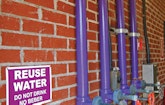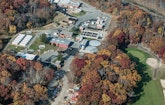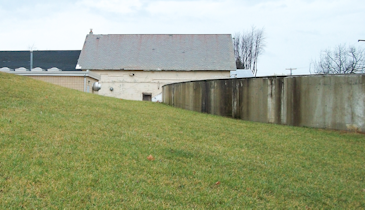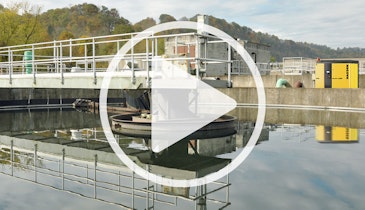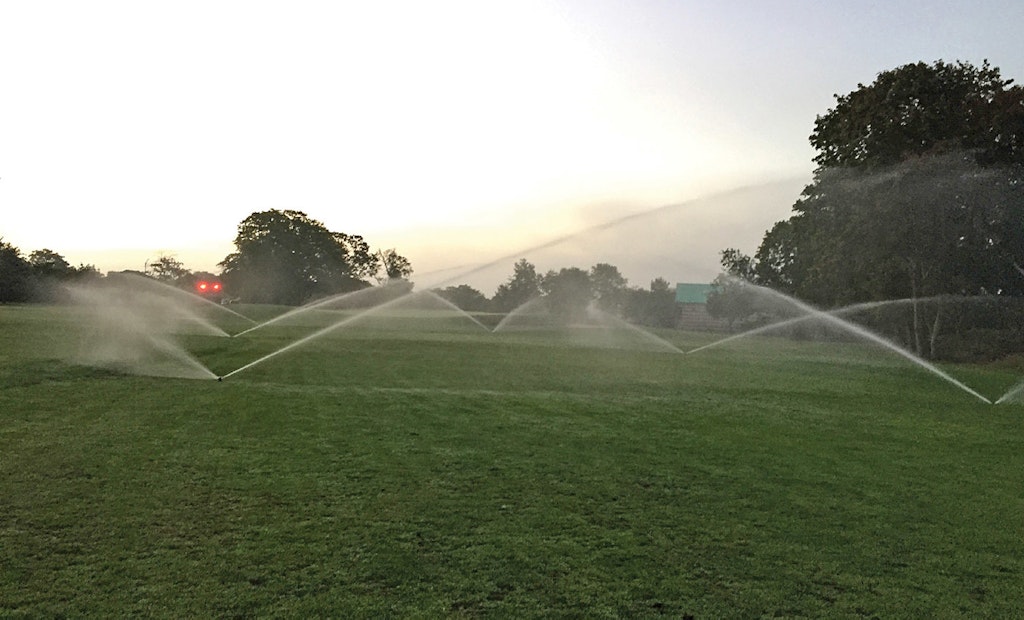
Reuse water is sprayed on the golf course grounds, replacing much of the groundwater previously used for the purpose.
A wastewater reuse project that took 14 years of planning is winning big environmental awards for the Riverhead Sewer District on Long Island, New York.
The wastewater treatment plant (1.5 mgd design, 1 mgd average) sits at the edge of the environmentally sensitive Peconic River Estuary, an EPA-designated nationally significant waterway. The shallow estuary has been prone to algae blooms, including the brown tide that decimated the scallop population in the 1980s.
The plant, which discharges into the Peconic River, had been a target of criticism whenever problems from nitrogen pollution occurred. Now it wins accolades from environmentalists for cutting its nitrogen discharge in half and diverting part of its effluent away from the estuary.
Setting a high bar
The diverted effluent becomes irrigation water for Suffolk County’s Indian Island Golf Course. Proposed in 2002, it was the first municipal water reuse project in the state. “We did a pilot project to find out what the effects would be on the turf and what type of equipment would be needed to meet the requirements for irrigation,” says Michael Reichel, district superintendent. “The thing was, there were no requirements or standards. We needed to demonstrate to the county and the state that the water would not be harmful to the public or the environment.”
The pilot project helped the Suffolk County Health Department create the necessary standards so that now other districts with similar plans can skip the pilot phase. “We set the bar pretty high for ourselves,” Reichel says. “It was the first one, so we wanted to make sure it got approved. We went with the strictest standard of every arid state that regulates reuse. We demonstrated that we could take a sidestream from the effluent, run it through an additional treatment system.”
The Riverhead plant was built in 1937 with primary treatment and chlorine disinfection. It was upgraded to secondary treatment with trickling filters in 1959. In 2000, sequencing batch reactors and UV disinfection were added. When planning for the irrigation project began in 2002, the town was not required to reduce its river discharge.
Multiple benefits
“It wasn’t a permit issue,” Reichel says. “It just made sense: Send it to another source that could use it. The only thing that separates us is a fence. It was pretty simple. It’s just something we looked at for the environmental benefit.” Those benefits include:
- Reducing nitrogen discharge to the Peconic River.
- Eliminating the pumping of 100 million gallons of groundwater per year for golf course irrigation, preserving the aquifer and the local source of drinking water.
- Providing irrigation lower in iron, reducing maintenance issues for irrigation equipment.
- Reducing the need for nitrogen fertilizer on the golf course.
- Reducing the energy required for irrigation pumping.
The plan diverted up to 450,000 gpd of effluent, passing it through microfiltration membrane (Koch Membrane Systems) and applying a second round of UV disinfection. “It’s kind of like wearing belts and suspenders,” Reichel says.
The project cost was estimated at $3.1 million, but that changed when the state Department of Environmental Conservation, after research, determined that the water discharged into the river should have less than 4 mg/L of nitrogen. The Department of Environmental Conservation computer model showed that reducing effluent nitrogen would help boost dissolved oxygen in the estuary. Other nitrogen sources feed the estuary, including atmospheric deposition, groundwater underflow, and storm runoff, but they can’t be controlled.
The change in Riverhead’s permit meant the entire plant had to be upgraded to the 4 mg/L nitrogen standard, and the price rose to $24 million. During the upgrade, the Riverhead team preserved existing facilities whenever possible. “We reused all the tanks on the site,” Reichel says. “We didn’t need to build anything new except tanks for UV disinfection. Everything else was repurposed.”
More to come
The original plan called for filtering only the irrigation water, but ultimately all of the flow was sent through the membrane and UV disinfection (TrojanUV). The irrigation water gets a second dose of UV (WEDECO - a Xylem Brand). The new system went online in September 2016. At an opening ceremony, the plant was described as the most advanced in the state.
With the reuse project operating successfully, Reichel has other sustainability improvements in his sights. The town also operates a small wastewater treatment plant (180,000 gpd design, 20,000 gpd average) in an industrial park. Reichel would like to install microfiltration there and use the effluent for groundwater recharge. He also has plans for the main plant’s biosolids, now landfilled in Pennsylvania: He believes it could be turned into Class B material that sod growers could use as a soil additive.
Many accolades
With the first water reuse project in the state of New York, the Riverhead Sewer District has won accolades and awards. The Water Environment Federation presented the district with one of its three national Project Excellence Awards in 2017.
“WEF is proud to honor Riverhead for investing in the sustainability of their water resources and the vitality of their community,” says Eileen O’Neill, executive director. “These projects show they are embracing an innovative mindset and viewing water not as a waste to simply discharge, but as a resource to reuse.”
Michael Reichel, district superintendent, received a regional Environmental Champion Award from the EPA in 2015 for his leadership on the water reuse project. The project also received a 2017 Diamond Award from the American Council of Engineering Companies of New York. It was also the first winner of the Sustainability Award from the American Society of Civil Engineers Long Island Branch.
In February, the town also received the Municipal Achievement Award from the New York Water Environment Association.

